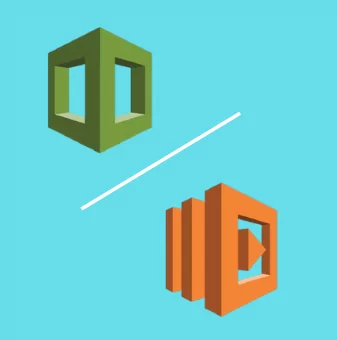Heard about AWS CloudFormation but not sure if it’s for you? Here’s everything you need to know about AWS CloudFormation, from how to use AWS CloudFormation templates, to the CloudFormation concepts and CloudFormation custom resources that you’ll need to get your head around if you want to start automating best practices with infrastructure as code. (This is part of an extensive series of guides about Iaas.)
Table of Contents
ToggleWhat is AWS CloudFormation?
CloudFormation will help you to provision and configure your resources so that you can simplify infrastructure management, replicate infrastructure quickly without needing to individually create and configure resources on AWS, and track the changes that are happening in your AWS environment.
Anyone who works on AWS knows that often a single task will take a few different resources to manage. Let’s take a scalable web app with a database at the back-end. This will use load balancing, a database instance, and an auto-scaling group. With AWS CloudFormation, you don’t need to create each resource and then configure them to work as a whole. These are created together and work as a stack, and then you can use or delete this whole stack as a single entity.
What About AWS CloudFormation Templates?
AWS CloudFormation templates is the way that you save the relevant resources and their properties. These templates are what you use to create a stack. For example, every time an application needs additional availability in a new region, you may want to replicate it. Rather than doing it from scratch each time, you can create a template that establishes the resources you need, and simply replicate to the relevant regions, as many times as necessary.
Related Content: Learn about data center migration
Making Changes to CloudFormation Resources
Using AWS CloudFormation, you can also make small changes to existing templates, to save time when creating new infrastructure. Let’s say that your instances are foundationally set up the way that you want, but you’d like to switch to higher performance when you auto scale. Not only does AWS CloudFormation allow you to make this change quickly and easily from an existing template, if you create any issues as a result of whatever change you’ve made, you can easily roll back to a previous version. All AWS CloudFormation templates are kept as text files. Even non-technical stakeholders can quickly and simply track the differences between changes you’ve made to your environment, and easily compare two or more versions, including the who, what, when, where and why.

Lanir specializes in founding new tech companies for Enterprise Software: Assemble and nurture a great team, Early stage funding to growth late stage, One design partner to hundreds of enterprise customers, MVP to Enterprise grade product, Low level kernel engineering to AI/ML and BigData, One advisory board to a long list of shareholders and board members of the worlds largest VCs
Tips from the Expert
In my experience, here are tips to enhance your use of AWS CloudFormation:
-
Version your templates
Store your CloudFormation templates in version control (e.g., Git) to track changes, collaborate effectively, and roll back if issues occur.
-
Modularize templates
Break down large templates into modular components. Use nested stacks for better manageability and reuse of infrastructure code.
-
Leverage parameterization
Use template parameters to make your templates flexible, allowing you to deploy stacks with varying configurations without duplicating code.
-
Automate testing
Integrate CloudFormation template testing into CI/CD pipelines using tools like cfn-lint or TaskCat to ensure templates are error-free before deployment.
-
Monitor drift detection
Regularly use CloudFormation’s drift detection to check if any resource configurations have changed outside of the stack management, maintaining alignment with the defined infrastructure state.
The CloudFormation Concepts You Should Know About
In order to fully understand how to get the most out of AWS CloudFormation, there are four new concepts that Amazon has introduced.
Template: This is a JSON or a YAML declarative code file. It will have all the information in text that explains the resources that will be used to deploy any given application.
Stack: This is the group of resources that you have described inside the template. When used in a stack, all of the resources can be managed and looked at as a single unit, for example their state and their dependencies.
Change Set: Imagine this like a preview, to show you the changes that will be put into place by any stack operations. For example, creating, updating, or removing and deleting any resources.
Stack Set: Just like a single stack is a group of resources established by a template, a stack set is a group of these stacks. These can be managed together as one, and can replicate a group in AWS.
If you’re looking to start seeing the benefits of infrastructure as code, such as automating best practices for ease of use, scaling your infrastructure more widely to new regions, integrating with other AWS services, or modeling, managing and provisioning resources with more control, check out more information on AWS.
If you would like to get actionable insights to deliver greater value to customers, consider leveraging AWS CloudFormation to automate and streamline resource provisioning, ensuring consistent, secure, and scalable architectures.
If you’d like more advice about setting up your AWS environment with best-practices and insight in mind, get in touch directly to speak to one of our AWS visibility experts.
Extend Your Infrastructure Insight with Faddom
If AWS CloudFormation helps you build and manage your cloud infrastructure with ease, Faddom ensures you can see and understand your entire hybrid infrastructure seamlessly. Whether you’re scaling your operations or integrating services, comprehensive application dependency mapping provides the visibility needed to manage complexity and optimize resources.
Faddom’s agentless, real-time mapping empowers teams to track changes, avoid misconfigurations, and align with best practices for proactive IT management. Ready to enhance your cloud and on-premises clarity? Explore how Faddom supports your infrastructure goals today by filling out the form in the sidebar!
See Additional Guides on Key IaaS Topics
Together with our content partners, we have authored in-depth guides on several other topics that can also be useful as you explore the world of IaaS.
Load Balancer
Authored by Radware
- [Guide] What is a Load Balancer? History, Key Functions, Pros and Cons | Radware
- [Guide] What Is Global Server Load Balancing (GSLB) & Top 3 Benefits | Radware
- [Product] Radware Alteon | Application Delivery and Security
AWS Cost Optimization
Authored by Finout
- [Guide] Top 5 Free & Open Source AWS Cost Optimization Tools
- [Guide] Top 10 AWS Cost Optimization Best Practices & Why You Need Them
- [Webinar] How To Create a Cost-Effective AWS Environment
- [Product] Finout | Enterprise-Grade FinOps Platform
Hybrid Cloud
Authored by Faddom




